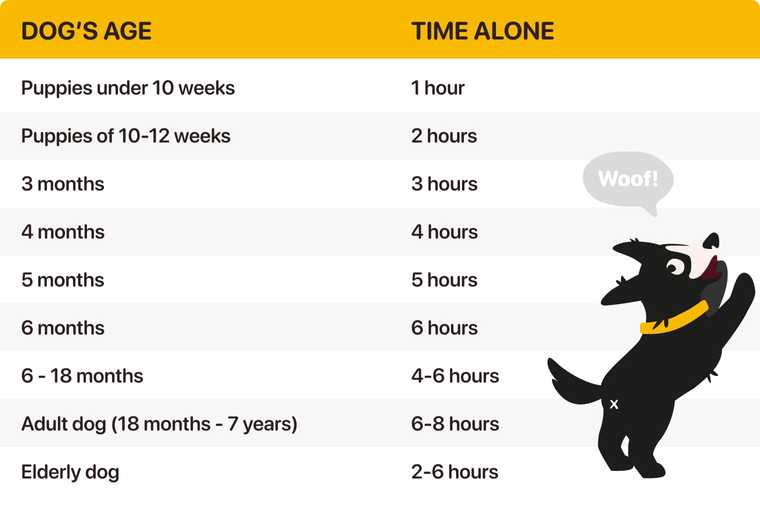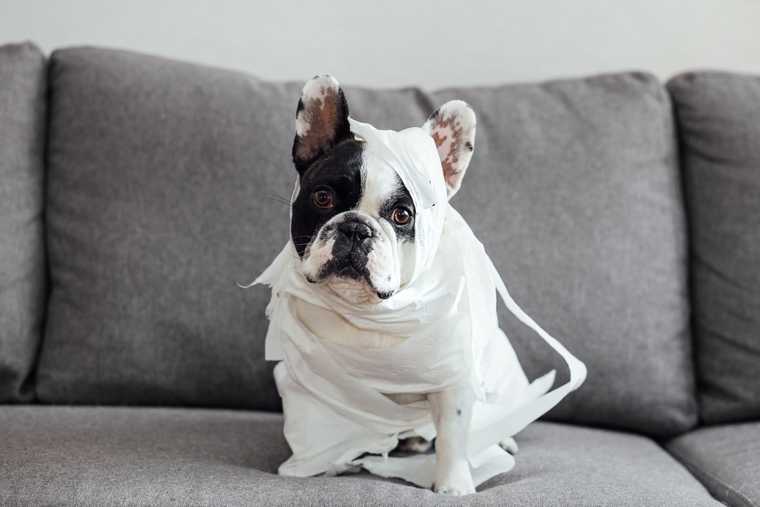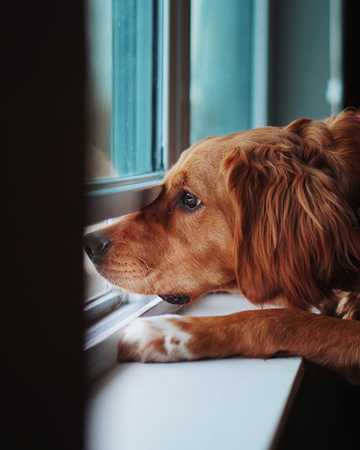How to Train a Dog to Stay Home Alone?

Leaving your dog home alone is part of being a pet parent. Knowing how to handle this situation can significantly impact your dog's happiness and peace of mind, whether it's a short trip to the store or a longer workday.
This guide will explain the dos and don'ts of leaving a dog alone and how to train your dog to stay and deal with being home alone. These tips will ensure your dog stays safe, happy, and well-adjusted when you're not around.
Understand Your Dog's Needs Better
While it might be tempting to look for a fixed number of hours you can leave your dog home alone, remember that each dog handles solitude differently.
Factors that influence a dog’s tolerance for staying alone:
- How long your dog can hold their bladder
A dog’s bladder control depends on age, size, and diet.
- Emotional needs
It's crucial to keep your dog engaged and mentally stimulated while you are away to prevent boredom and separation anxiety.
- Breed-specific behaviors
Depending on the dog breed, energy level varies. Consider how much exercise your dog needs and adjust the length of your absence accordingly.
How Long Can Your Dog Stay Home Alone?
Experts disagree on how long a dog can stay home alone without supervision. This time will vary depending on the several factors discussed above. Below is a table showing age-based guidelines for leaving a puppy alone.

While this table likely provides estimates for how long puppies and dogs can hold their bladder, the specific duration a dog can be left alone at home truly depends on the individual dog.
When leaving your pup at home, you should also consider their breed, as this can influence their personality, temperament, and their tolerance for being alone.
For instance, Border Collies and Australian Shepherds are known for their high intelligence and energy levels. These dogs may become restless or even engage in destructive behavior if they don't get enough mental stimulation and physical exercise.
On the other hand, more independent and less active breeds, such as Basset Hounds and Shih Tzus, might be more comfortable with longer periods of solitude. However, these breeds can develop separation anxiety if left alone for too long.
Toy breeds like Chihuahuas and Yorkshire Terriers are very owner-oriented, and considering that people often treat them like real babies, they’re more likely to develop a phobia of being left alone, i.e., separation anxiety. That is why teaching these dogs to be more independent and confident is crucial.

Before You Leave Your Dog Home Alone
Dogs see their owners as part of their pack and don’t understand why we must sometimes leave them alone. Our job is to teach them to enjoy being home alone and to prevent poor or destructive behavior. Here are some solutions for leaving a dog at home alone:
Puppy-proof your house
Make your living space safe by removing potential hazards, such as electrical cords, toxic substances, and small objects.
Crate-train your dog
Crate training is essential for helping dogs settle down and establish a safe space. It also helps prevent undesirable behaviors.
Learn your dog's routine
Understanding your dog's routine helps you effectively meet their needs, manage their behavior, and prevent anxiety. It also ensures you stay on top of bathroom breaks, meals, exercise, and playtime, strengthening their well-being.

Teach them to enjoy being home alone
Start with short absences (begin with 30 seconds and slowly increase the time) while they're in a crate or a small room, and make sure they always have something fun to do.
Provide enrichment
Mental stimulation is vital for keeping your dog’s mind active, preventing boredom and destructive behaviors, and supporting overall cognitive health.
Ensure enough activities when you're home
Dogs that are mentally and physically tired from activities and playtime are more likely to relax and rest when you’re away, making the transition to being alone less stressful.
Don’t make a big deal out of leaving and returning
Keeping a low-key approach to your comings and goings will reduce your dog's anxiety.
How Can You Keep a Dog Busy When You’re Away?
Leaving dogs home alone can be overwhelming. A modern, hectic lifestyle may require you to be away for prolonged periods.
Can you do it guilt-free and avoid separation anxiety? Fortunately, there are many professional services available to make leaving a dog alone less stressful for everyone involved. Here are some options for keeping your dog happy when home alone:
Hire a dog walker
Arranging regular walks with a professional pet sitter can enrich your dog’s daily experience and meet their socialization needs.
Use doggy daycare
A daycare service is a great way to socialize your dog. It also helps your canine companion build confidence, provides safe play opportunities, and contributes to an improved quality of life.
Get another dog
If your dog needs company, having another dog can help. The dogs will keep each other entertained, preventing boredom and destructive behavior.
Why Is Your Dog Afraid to Stay Home Alone?
Some dogs struggle with staying home alone and may misbehave or become disruptive. These behaviors are not your dog's fault; they are signs of stress that you can help address.
The most common reasons dogs are afraid to be home alone include:

Separation anxiety
Gradually desensitize your dog to departure cues, keep them busy in your absence (use interactive toys), and spend plenty of time together. A long walk before you leave can help them nap while you're gone.
Boundary frustration
Adult dogs that lack physical or mental engagement may resist being left alone. Long-lasting chews, physical and mental workouts, or crate training can help.
Common Mistakes Dog Parents Make When Leaving Dogs at Home
1. Leaving Them Alone Too Long
Dogs are social creatures, and long periods alone can lead to boredom and anxiety. Ignoring these issues can worsen them over time.

2. Forgetting About Food and Water
Always leave enough food and fresh water. Dehydration and hunger can harm their health and well-being.
3. Lack of Mental Stimulation and Working Out
Dogs need mental and physical exercise to stay healthy. Failing to provide activities can lead to destructive behavior.
4. Not Puppy-Proofing the Home
Puppies are curious and love to explore. Failing to puppy-proof your home can lead to accidents, injuries, or damage.

5. Not Checking for Escape Routes
Dogs are crafty; some may find an escape if there's an opportunity. Ensure doors, gates, and fences are securely closed.
6. Overexciting Greetings When Returning
Dramatic arrivals can make your time away seem more significant, increasing your dog’s anxiety. Greet them calmly and go about your routine.
Can You Leave Your Dog Alone For 8 Hours or More?
Work, family life, and other obligations often require extended time away from home. Is it safe to leave your dog alone for an 8-hour workday?
Generally, leaving your dog alone for 4-6 hours is fine. However, many people have to be away for 8-9 hours daily. Luckily, dogs are good at adapting. As long as you provide a dog with enough space to be active and meet their basic needs in food, water, and entertainment, they should tolerate your absence well.
Wrap Up
Leaving your dog alone at home can be a challenge. While some dog breeds effortlessly handle things, others might see your departure as the ultimate heartbreak. Just stick to the plan: routine, fun, and a sprinkle of love, and you’ll make your pup's alone time an enjoyable adventure!
Read more:

Woofz Content Manager with a deep passion for dogs and a strong affinity for positive reinforcement training methods.

Certified dog trainer, exclusive positive reinforcement methods & tackling aggression problems.
